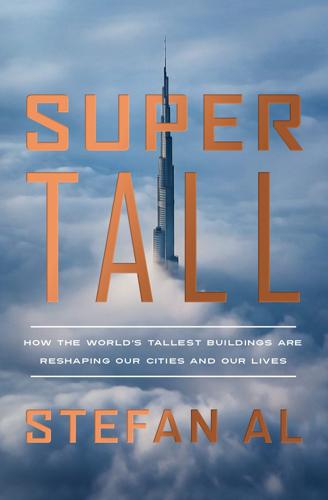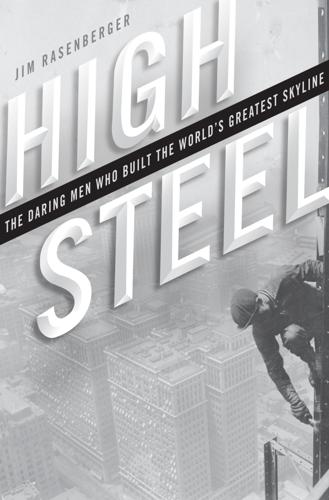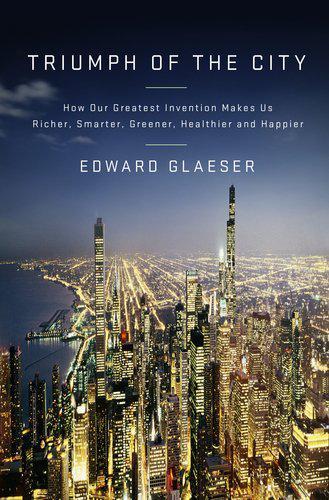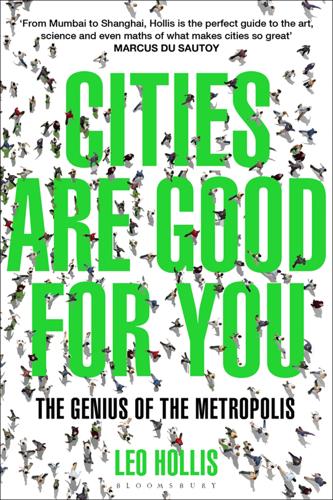
Supertall: How the World's Tallest Buildings Are Reshaping Our Cities and Our Lives
by
Stefan Al
Published 11 Apr 2022
Even though many people would balk at the thought of entering an elevator, a few visionaries knew that elevator technology was on the rise—pun intended. The first elevator shaft preceded the first safety elevator. Even the year before Otis demonstrated his safety mechanism, the industrialist Peter Cooper—who had designed and built the first American locomotive—built an elevator shaft inside the Cooper Union Foundation Building in New York. Cooper knew skyscraper construction would lead to elevator innovation. Any progress in technology can drive us forward, but it will never be successful unless it is also safe. Otis eventually designed a safety elevator for the building. It wasn’t until several years after Otis’s safety demonstration that elevator use would become more widespread.
…
Supertall is the story of today’s tallest buildings. It traces their existence to a convergence of two trends: the acceleration of technological progress and new societal preferences. The first is the most obvious. Technology has always been an important factor allowing for very large buildings. It was the invention of the safety elevator that led to the skyscraper. Then structural steel enabled builders to stack more floors on top of one another, upon which air-conditioning allowed the ventilation of these higher floors. These days, sensors monitor occupants and the environment to distribute conditioned air and electric light more efficiently.
…
He then invited his assistant bearing an ax to do the unthinkable. His assistant swung the ax and slashed the rope, the platform jerked, and people gasped. The victorious anticlimax followed: nothing else happened. Otis bowed, took off his top hat, and proclaimed. “All safe, gentlemen, all safe!”5 The safety elevator was born. World’s fairs have always excited people with new wonders to change their world. The Exposition Universelle in Paris in 1889 introduced the Eiffel Tower, showcasing the strength of wrought iron. The Great Exhibition in London in 1851 brought the Crystal Palace, with the greatest plates of glass ever seen in buildings.

Built: The Hidden Stories Behind Our Structures
by
Roma Agrawal
Published 8 Feb 2018
From the top of it Otis could be heard shouting, ‘All safe, gentlemen. All safe.’ Four years later, Otis installed his first, steam-powered safety elevator in the five-storey E.V. Haughwout & Co. department store on the corner of Broadway and Broome Street in New York. The eponymous company he founded has continued to supply elevators and escalators to buildings around the world, from the Eiffel Tower and Empire State Building to the Petronas Towers in Malaysia. Such buildings would hardly have been possible without Otis’s invention. Until he developed the safety elevator, the height of a building was restricted by how many stairs people were prepared to climb.

High Steel: The Daring Men Who Built the World's Greatest Skyline
by
Jim Rasenberger
Published 15 Mar 2004
The height of buildings had been pretty well fixed at six stories through the middle of the nineteenth century. This was a matter not of structural integrity but of human endurance, five flights of stairs being about as many as anybody could reasonably be expected to climb. This first problem of height had been solved by Elijah Otis’s “safety elevator,” first demonstrated in 1854 and now commonplace in 10-and 11-story office buildings and hotels around the Loop. But while Otis’s elevators made new heights plausible, the new heights created a fresh set of problems. The “elevator buildings” were primarily constructed of masonry, supported by walls of stone and brick.
…
Rich and Famous Deli Richards, Morgan rigging rigidity Ritchie, Bill rivet gangs Robbins, Danny Rock, The. See Newfoundland Rockefeller Center Rockhold, Paul Roebling, John Roebling, Washington roughnecks. See also bridgemen; ironworkers rubella Ryan, John saddles, suspension bridge Saeger, Charles safety safety elevators safety gang sailors, as ironworkers St. Vincent’s Hospital San Francisco Bay Bridge Sarandon, Susan scaffolds, bridge scale boxes Scally, Kevin Scandinavians Scott, Leroy seagulling sealing (swiling) Sears Tower Seinuk, Ysrael September 11 destruction of World Trade Center. See also World Trade Center setters.

Triumph of the City: How Our Greatest Invention Makes Us Richer, Smarter, Greener, Healthier, and Happier
by
Edward L. Glaeser
Published 1 Jan 2011
He had himself hoisted on a platform pulled by a rope, and then, dramatically, an axman severed the rope. The platform dropped slightly, then came to a halt as the safety brake engaged. The Otis elevator was a sensation, and Otis’s company remains one of the world’s leading elevator makers. The first two buildings to install powered safety elevators were both in New York City: a department store on Broadway and the Fifth Avenue Hotel. In the 1870s, the elevator enabled pathbreaking structures, like Richard Morris Hunt’s New York Tribune building, to reach ten stories. Across the Atlantic, St. Pancras Station in London also reached ten stories, and at 269 feet it was far taller than Hunt’s New York skyscraper.
…
135 Haussmann, who rebuilt the city: All on Haussmann’s Paris from Jordan, Transforming Paris. 136 Tower of Babel: Genesis 11:4, King James Version. 137 In worldly Bruges, wool topped worship: John Weale, Quarterly Papers on Architecture, vol. 1, London: Iohan Weale, 1844. 137 the 284-foot spire of Trinity Church: Goldberger, “God’s Stronghold.” 137 Eiffel Tower: “The Eiffel Tower,” New York Times, Apr. 21, 1889, p. 13, ProQuest Historical Newspapers, Document ID: 106346206. 137 move upward was a moderate evolution: Landau and Condit, New York Skyscraper, 5-18. 138 Tall buildings became possible in the nineteenth century: Goodwin, Otis, 45. 138 Archimedes allegedly built one: Ibid., 8. 138 Louis XV had his own personal lift: Taub, “Elevator Technology.” 138 Matthew Boulton and James Watt: Landau and Condit, New York Skyscraper, 35-36. 138 Otis ... took the danger out of vertical transit: Goodwin, Otis, 12-13. 138 first two buildings to install powered safety elevators: Ibid., 17; and Landau and Condit, New York Skyscraper, 36. 138 the elevator enabled pathbreaking structures: Landau and Condit, New York Skyscraper, 62. 139 whether Jenney was really the inventor of the skyscraper: Turak, “Home Insurance Building.” 139 Jenney’s proto-skyscraper was a patchwork: Bascomb, Higher, 94-97. 139 Other builders ... further developed the idea: Landau and Condit, New York Skyscraper, 268, 302, 334, and passim. 139 They were great architects ... fireproofing innovator Peter B.

Vertical: The City From Satellites to Bunkers
by
Stephen Graham
Published 8 Nov 2016
The elevator – a ‘veritable machine for making cities’11 – as Ryan Sayre puts it, thus allowed ‘up as a habitable territory … to be made. Sometimes forcefully but always without precedent.’12 When combined with electric or hydraulic power and cable drum innovations adopted from the mining industry, safely braked or ‘safety’ elevators released cities from the millennia-old constraints created by the need for the human ascent of stairs. The overcoming of gravity for the movement upward of human inhabitants was able to match the overcoming of gravity through innovations in skyscraper construction and operation. Since its invention, the elevator, as Rem Koolhaas puts it, ‘has been the great emancipator of all horizontal surfaces above the ground floor’.13 By 1916, the Woolworth Building in Manhattan – the world’s highest skyscraper at the time – boasted twenty-nine elevators that ascended at 3.5 metres per second to an altitude of 207 metres.14 Faster, bigger and more reliable elevators have been fundamental to the skyward shift in architecture and engineering ever since.
…
In his pioneering work on the imperial resource grabs that sustained the explosive growth of San Francisco in the nineteenth century, Berkeley geographer Gray Brechin has explored the deep but neglected historic connections between mining and skyscrapers in unprecedented detail.14 He shows how many of the technologies that were key to the building of corporate skyscrapers in North American downtowns from the late nineteenth century onwards emerged first in deep mines. The deepening gold mines of the Californian Gold Rush in the 1850s, in particular, provided the sites where the ventilators, multilevel telephones, early electric lighting and high-speed safety elevators that would later be pivotal to construction of the first downtown skyscrapers were first used systematically. ‘All were demanded and paid for by the prodigious output and prospects of the gold mines of California’, he writes.15 In addition, the use of square supports, initially made of wood, to build large, multi-storey structures within mines to provide support as mined material was removed, later provided the basis for the famous steel girder structures of the first corporate towers.

The Survival of the City: Human Flourishing in an Age of Isolation
by
Edward Glaeser
and
David Cutler
Published 14 Sep 2021
Large buildings, like those that A. E. Lefcourt erected in New York’s once mighty Garment District, sprang up near these rail hubs to make it easier for commuters to come in and for finished goods to leave. Those building heights required two urbanizing innovations of the nineteenth century: the safety elevator and the metal-framed skyscraper. The skyscraper has a long history. Joseph Paxton, an English gardener, architect, and member of Parliament, borrowed the metal framing of greenhouses for his design of the Crystal Palace that defined London’s Great Exhibition of 1851. That building seems to have inspired the French architect Victor Baltard, who brought iron framing to Paris for the marketplace of Les Halles and the church of Saint-Augustin.
…
The American architect William Le Baron Jenney studied in Paris and inserted a partial steel frame into Chicago’s Home Insurance Building, which is sometimes credited as being the world’s first skyscraper. Skyscrapers replace horizontal space with height. There was little demand for many-storied buildings until elevators eliminated the need to tromp up all those flights. Elisha Otis produced the first safety elevator, which he demonstrated, coincidentally, at New York’s 1853 Crystal Palace exhibition. He stood on an elevator deck and dramatically cut the only rope that was holding him aloft. The crowd watched as the Otis mechanism stopped the deck’s downward trajectory and kept its inventor safe. It took Jenney thirty more years to build Home Insurance, but in 1853, New York had both the metal frame and the safe vertical-motion machine that would enable the climb to the sky.

Everyware: The Dawning Age of Ubiquitous Computing
by
Adam Greenfield
Published 14 Sep 2006
This is not to say that social, juridical, and political forces do not exert shaping influences that are at least as significant—otherwise we really would have architected our cities around the Segway, and RU-486 would be dispensed over every drugstore counter in the land. But it wouldn't have taken a surplus of imagination, even ahead of the fact, to discern the original Napster in Paul Baran's first paper on packet-switched networks, the Manhattan skyline in the Otis safety elevator patent, or the suburb and the strip mall latent in the heart of the internal combustion engine. Let's draw three emerging technologies from the alphabet soup of new standards and specifications we face at the moment and take a look at what they seem to "want." First, RFID, the tiny radio-frequency transponders that are already doing so much to revolutionize logistics.

Exponential: How Accelerating Technology Is Leaving Us Behind and What to Do About It
by
Azeem Azhar
Published 6 Sep 2021
But cities did not subsequently achieve that scale again until London reached it in the nineteenth century. Our first 10-million-person ‘megacity’, New York, was born in the 1930s on the back of various technological enhancements – electricity, mass transit, modern sanitation, steel-framed skyscrapers, the safety elevator. It also depended on new supply chains that could provide the food and goods needed to sustain a population of that size.28 And yet we have consistently underestimated cities. They have largely been eclipsed in political terms – with power being held at a national level. Cities are neglected in the metrics and institutions we use to make sense of the world – gross national product, national populations, national languages, national anthems.

Cities Are Good for You: The Genius of the Metropolis
by
Leo Hollis
Published 31 Mar 2013
Walking through New York, heading southwards along Hudson Street, it is hard to forget that Manhattan is a nineteenth-century city, created on a grid first set out in 1811. Looking up to the skyline, one can still see water towers on top of the brick buildings that were created after Elisha Otis’s technological innovation, the safety elevator, which allowed architects to scale over five storeys high for the first time. We can see similar creative and engineering innovation in Sir Joseph Bazalgette’s London, Baron Haussmann’s Paris, Boston after the fire of 1872, the San Francisco that was built from the rubble of the 1906 earthquake.

Straphanger
by
Taras Grescoe
Published 8 Sep 2011
“The most spectacular consequence of the subway,” observed William Parsons, its chief engineer, “has been the skyscraper.” Without it, neither the Chrysler Building nor Rockefeller Center would exist: the horizontal technology of rapid transit, combined with a nineteenth-century breakthrough in vertical transportation—the safety elevator, first installed in a five-story building on Broadway in 1857—made closely spaced skyscrapers truly practical. The underground railway enabled the astonishingly rapid shift of Manhattan’s commercial center of gravity from Wall Street to Midtown, as Times Square and Grand Central were stitched together by the Forty-second Street Shuttle.

Capitalism in America: A History
by
Adrian Wooldridge
and
Alan Greenspan
Published 15 Oct 2018
In 1900, the number of telephones per person was four times more than in England, six times more than in Germany, and twenty times more than in France. There were as many telephones in New York State as in all of Europe.18 Technologies such as cars and telephones are so eye-catching that it is easy to ignore more humble advances. Elisha Graves Otis, the founder of Otis Elevator, devised a cable-drawn “safety elevator” in 1852 that not only whisked you from floor to floor but also prevented accidents with a fail-safe break. James Bogardus, an architect, developed cage construction, using a wrought-iron cage to provide the skeleton of the seven-story Harper & Brothers building in 1854, making it easier to build high.

Public Places, Urban Spaces: The Dimensions of Urban Design
by
Matthew Carmona
,
Tim Heath
,
Steve Tiesdell
and
Taner Oc
Published 15 Feb 2010
During the nineteenth century and early twentieth century, industrialisation, including new building materials and construction techniques – plate glass, steel, concrete, balloon frames, etc. – changed the scale of development. This coincided with other major developments in technology such as railways, the safety elevator and the internal combustion engine, and a host of related social and economic changes. Architects and engineers sought to meet the new demands and challenges of the period – ideas that came to be known as Modernism. Emerging in the first half of the twentieth century, Modernism in architecture and planning was driven both by horror at the squalor and slums of nineteenth century industrial cities, and by perception of the start of a new age – the Machine Age – in which society would reap the benefits of new technology and industrialisation.